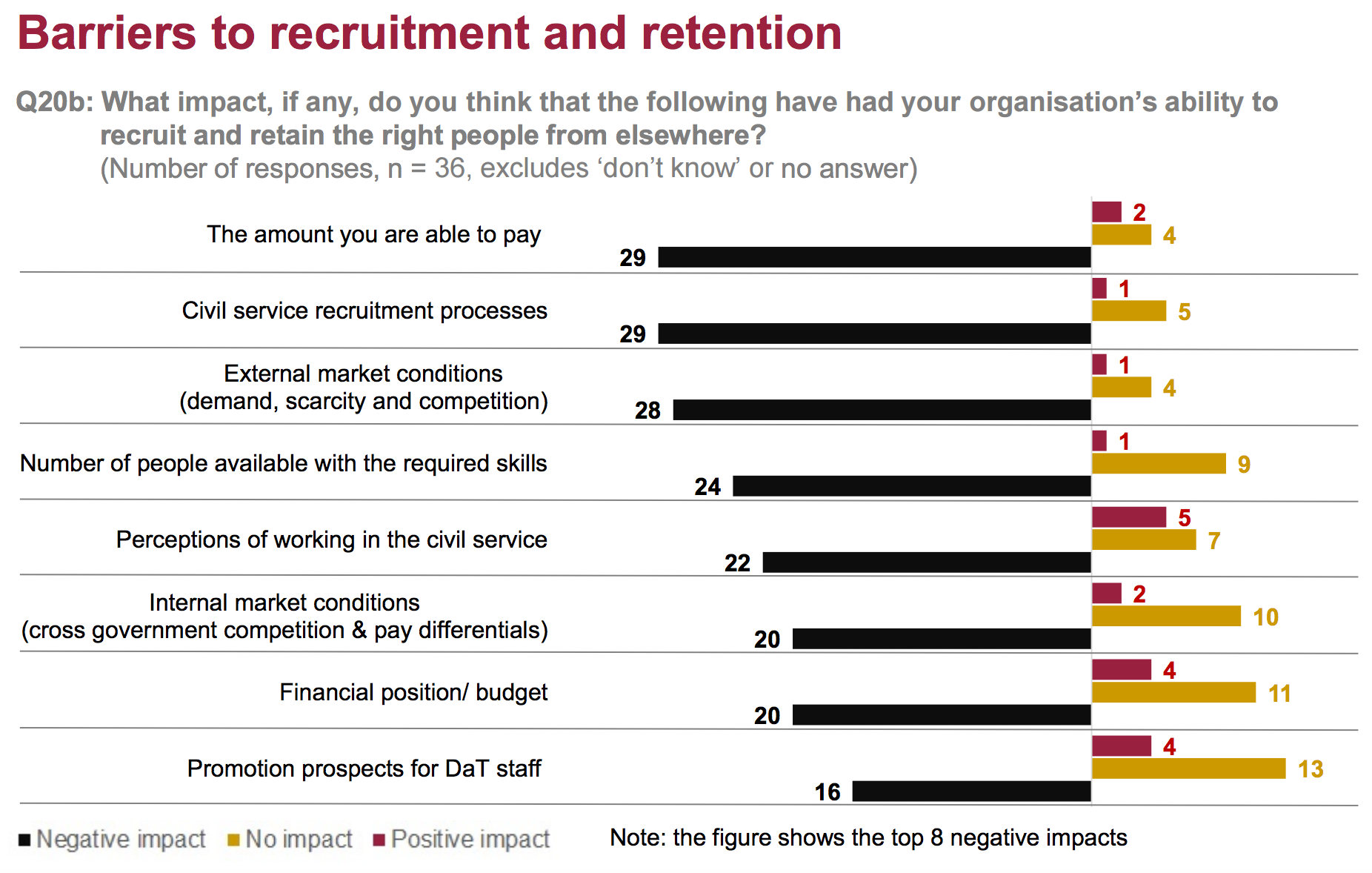The National Audit Office has published the results of its August 2015 skills survey of digital and technology professionals in the Government’s various departments.
The context of this skills survey is the need to power digitally-enabled business transformation, to aid major service redesign and reduce cost (enabling the Government to spend money elsewhere). However, a digital skills shortage in every sector has made the recruitment of skilled staff a thorny issue.
There’s much to digest in the report (do check it out in full, here), so I thought I’d bring you the three charts that struck me the most.
Also, to test your own digital knowledge take our free Digital Skills Index, which will benchmark your results against industry peers. And don’t forget to check out our range of digital and ecommerce training courses.
The organisation sees data and technology as merely ‘IT’
The chart below shows that technology professionals surveyed are almost universally on message, understanding that digital and technology is integral to business change.
However, their view of the rest of the organisation is of employees who think of digital and technology as simply an IT function.
One could argue this chart demonstrates a philosophical divide within Government, and doesn’t inform us of how this is manifest. Nevertheless, the chart is startling.
The culture required to drive change necessitates collaboration and ownership, something that can only be done if all employees understand the nature of the challenge.
Digital is about transforming services and enabling efficiency, not simply assisting day-to-day activity.

Recruitment processes are a barrier to snaring the right people
Granted, we’re talking about the civil service here, so we already understand that recruitment processes may be slightly bureaucratic (or, perhaps more fairly, thorough and adhering to guidelines).
But, this chart is surprising as it perhaps shows recruitment process as the second biggest barrier (after pay) to getting the right people on board. HR has to evolve the way roles are described and recruited to attract the right candidate.
Candidates with digital skills and experience have the upper hand in the current job market. The task for employers is to attract them by selling the organisation and the challenge at hand.
Gone are the days when job descriptions entailed a list of responsibilities.
Employers should be appealing for the ‘right fit’, letting candidates know who is right for the job, and encouraging frank evaluation of their organisation.
(Related reading: Five factors that are changing digital job descriptions; & Five common mistakes when writing a digital job description)

The importance of digital leaders in skills development
The following chart shows the relative importance of several factors on developing digital and technology in an organisation.
It’s clear that the right digital leader is the most important of these, followed by recruiting high potential employees.
Having the right digital leader can be a big carrot when trying to attract the right people to a business, as well as encouraging current employees to upskill and change company culture.
(Related reading: Effective Leadership in the Digital Age)


Comments